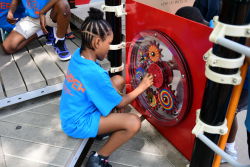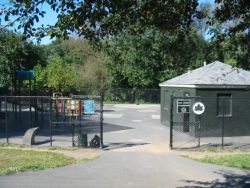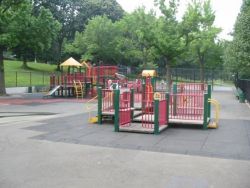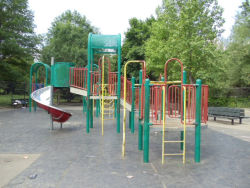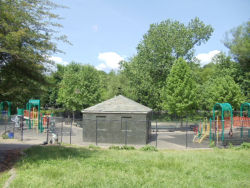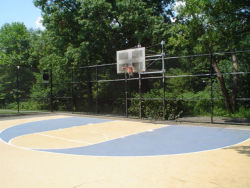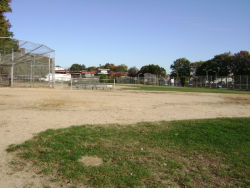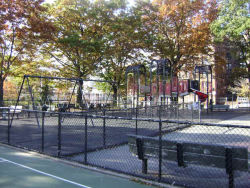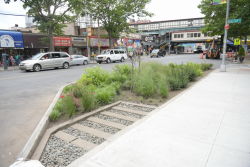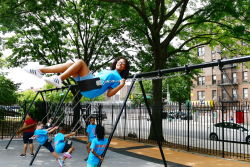Bronx River Parkway
Metcalf Playground
Metcalf Playground is named for Charles and Hester Metcalf, landowners during the 1840s in the area surrounding today’s Bronx River Parkway. Located on East 172nd Street and Metcalf Avenue (named for the same family), the playground is also bounded by the parkway.
The area along the Bronx River was originally a flourishing Native American settlement that was plentiful with game, fish, and good farmland. The Weckquaesgeck tribe called it Quinnahung (Planting Neck). As Europeans began colonizing the region, they followed the example of the Weckquaesgecks, raising tobacco and corn, fishing, and hunting. In the 1800s, with the rise of industry, the Bronx River became an attractive site for mills and factories. At one point no less than 12 mills stood on the banks of the river from North Castle to West Farms. The factories brought prosperity to the area, but with prosperity came pollution as local industries dumped their refuse into the river. Conditions deteriorated when the New York Central Railroad built its Harlem Line alongside the river in the 1844. Within a few years only slums and dumping grounds occupied the section between the river and the railroad tracks. In 1896, a report by the state Legislature stated that the Bronx River had become an “open sewer.”
The state appointed a commission to remedy the problem. After several months of intensive study, the commission recommended that the City of New York purchase the land alongside the river to create a landscaped parkway. Few parkways have been designed with more care and attention to scenic beauty. The commission not only insisted on a roadway that could accommodate large numbers of vehicles but also called for landscaping that incorporated the natural features of the terrain including ponds, rocks, and woodlands. Any objects or plantings that were introduced into the design were required to conform to the existing landscape. This included reforestation – no “exotic” trees or plants were allowed. The plan also provided “intimate bits for those who wish to pause”.
The Westchester portion of the parkway was completed in 1925. For the Bronx extension, Commissioner of Parks Robert Moses followed the same principles. In February 1938, he requested the “acquisition of property for a parkway designated as Bronx River Parkway, southern extension . . . and laying out [a series of] public park.” A 1992 renovation restored the Bronx Park Parkway after it had fallen into neglect during the previous decades. The Bronx River area is currently the target of a major Parks initiative, begun in 1997. The program will clean the river and restore wetlands systems, as well as establish a continuous greenway of parks along its banks.
Surrounded by vegetation on three sides, the Metcalf Playground offers a secluded recreational space for the young children of the neighborhood. It is equipped with play equipment, safety surfacing, scattered red benches.
Check out your park's Vital Signs
Clean & Safe
Green & Resilient
Empowered & Engaged Users
Share your feedback or learn more about how this park is part of a
Vital Park System

